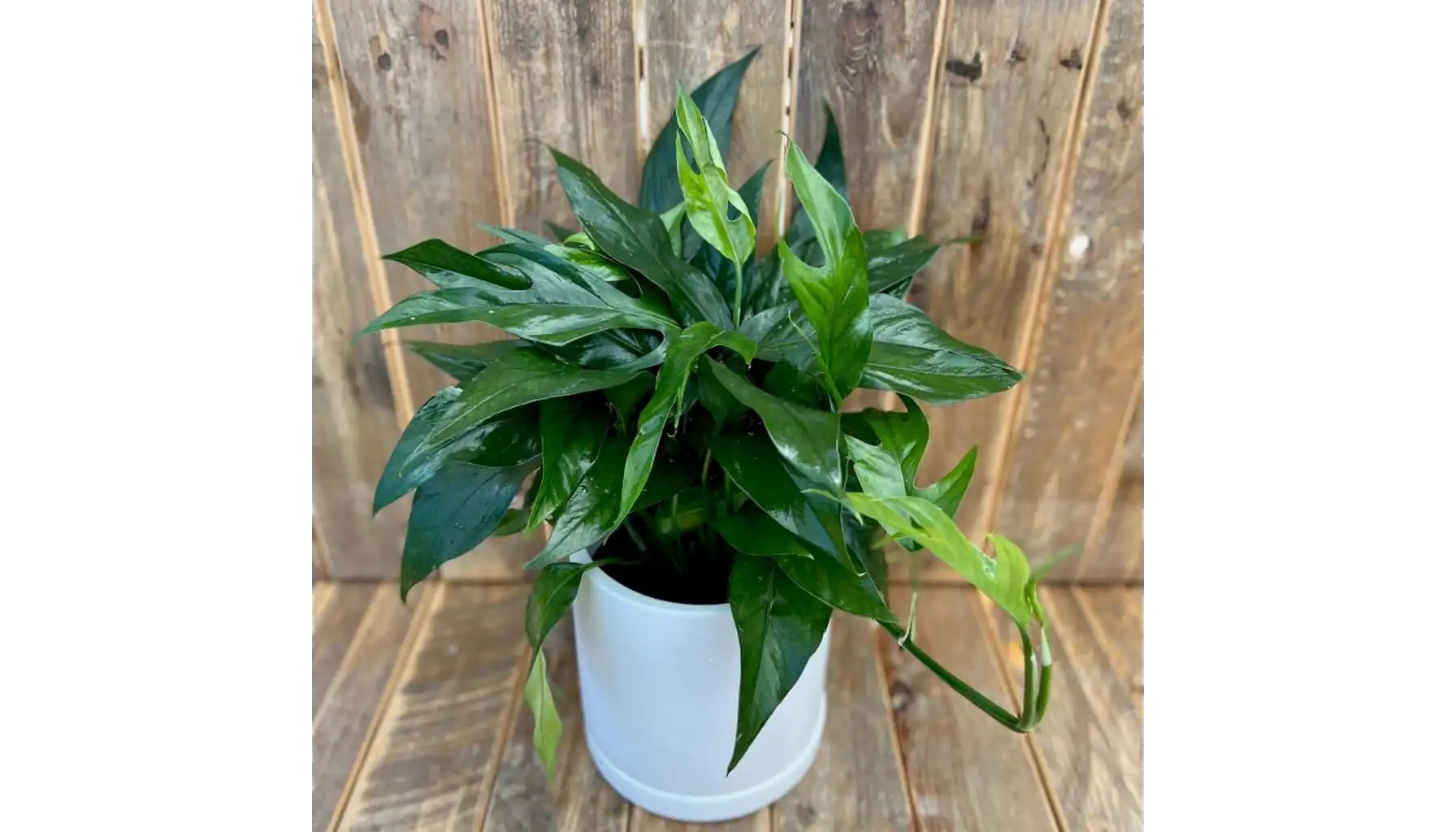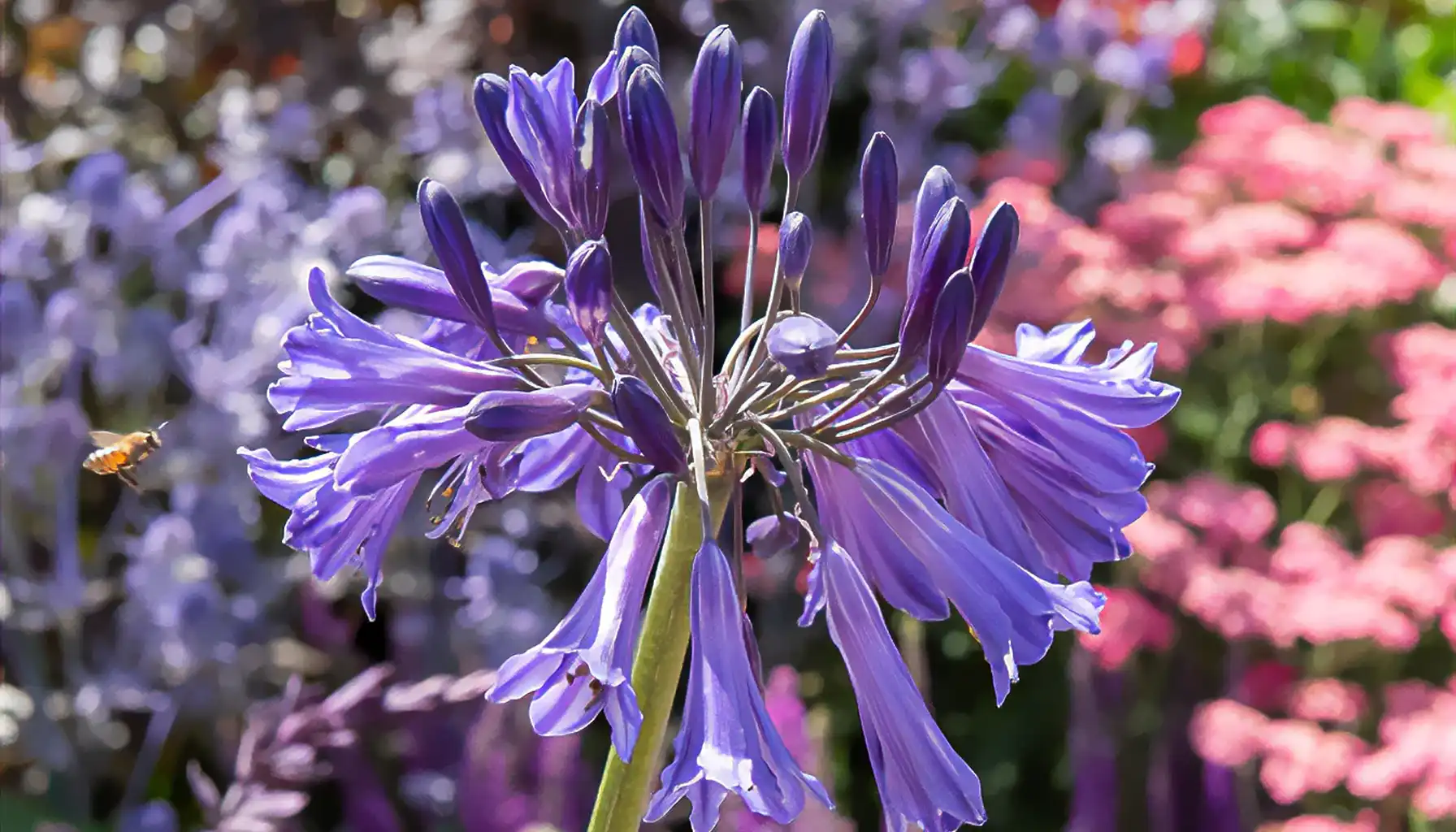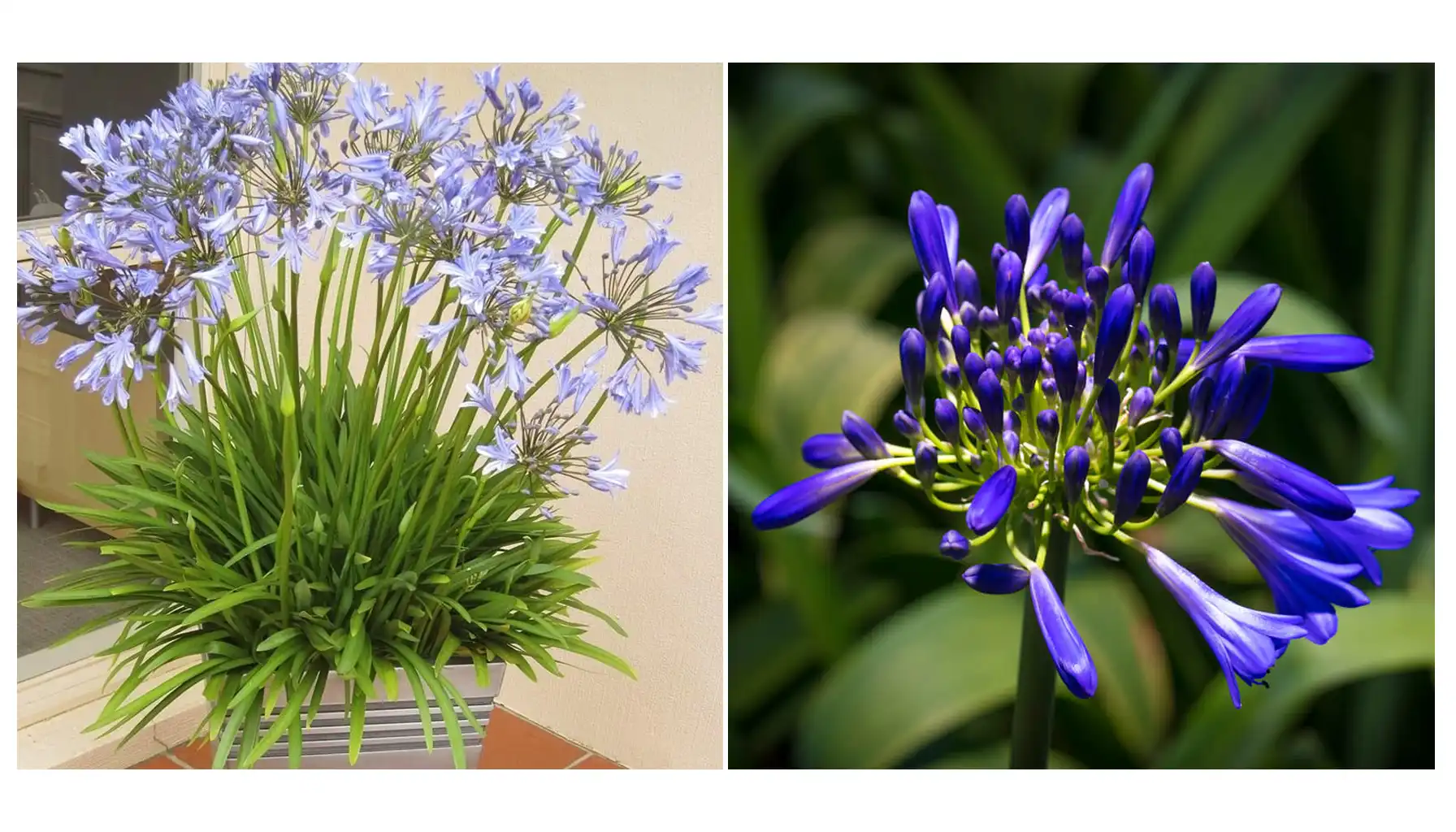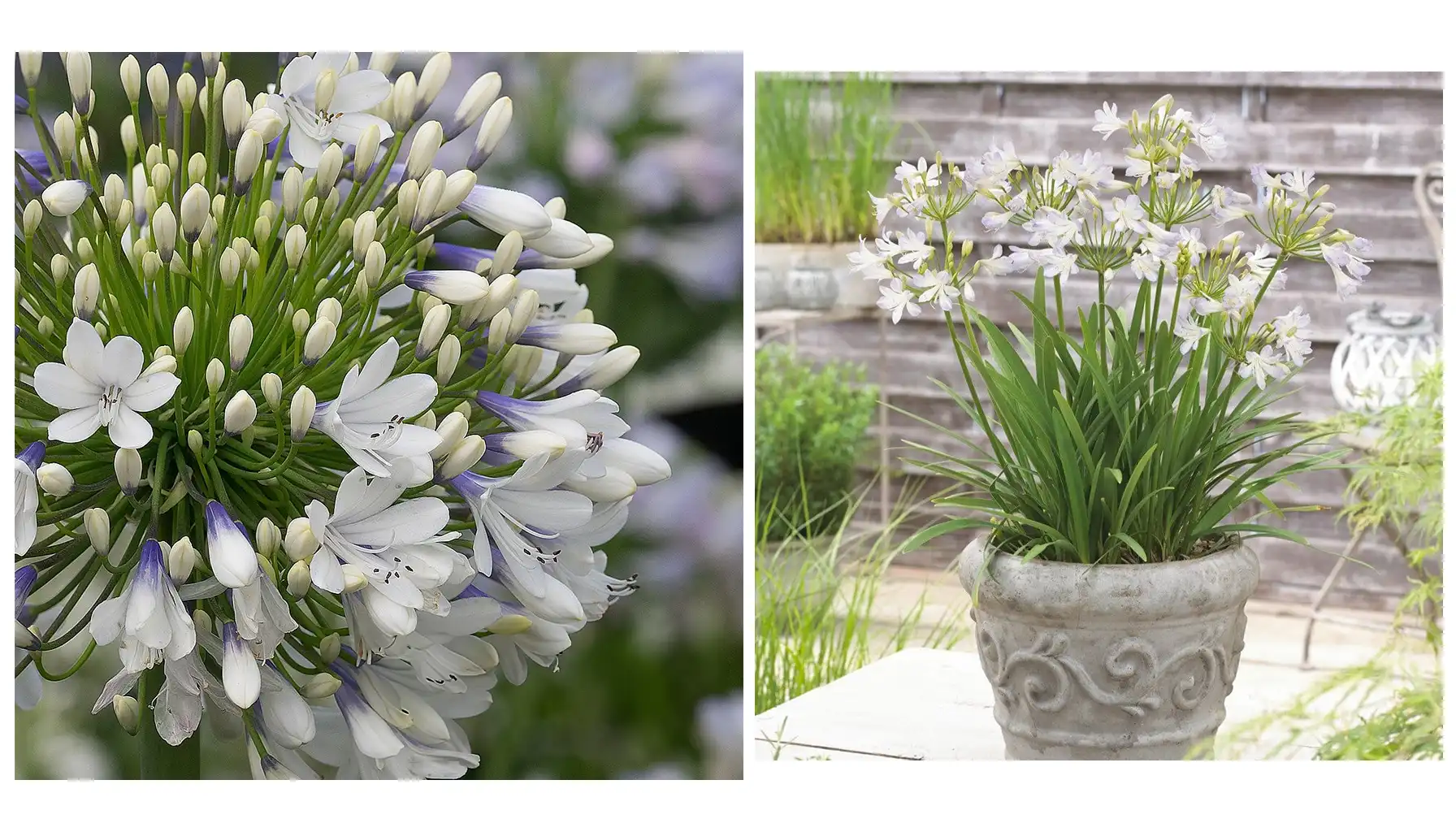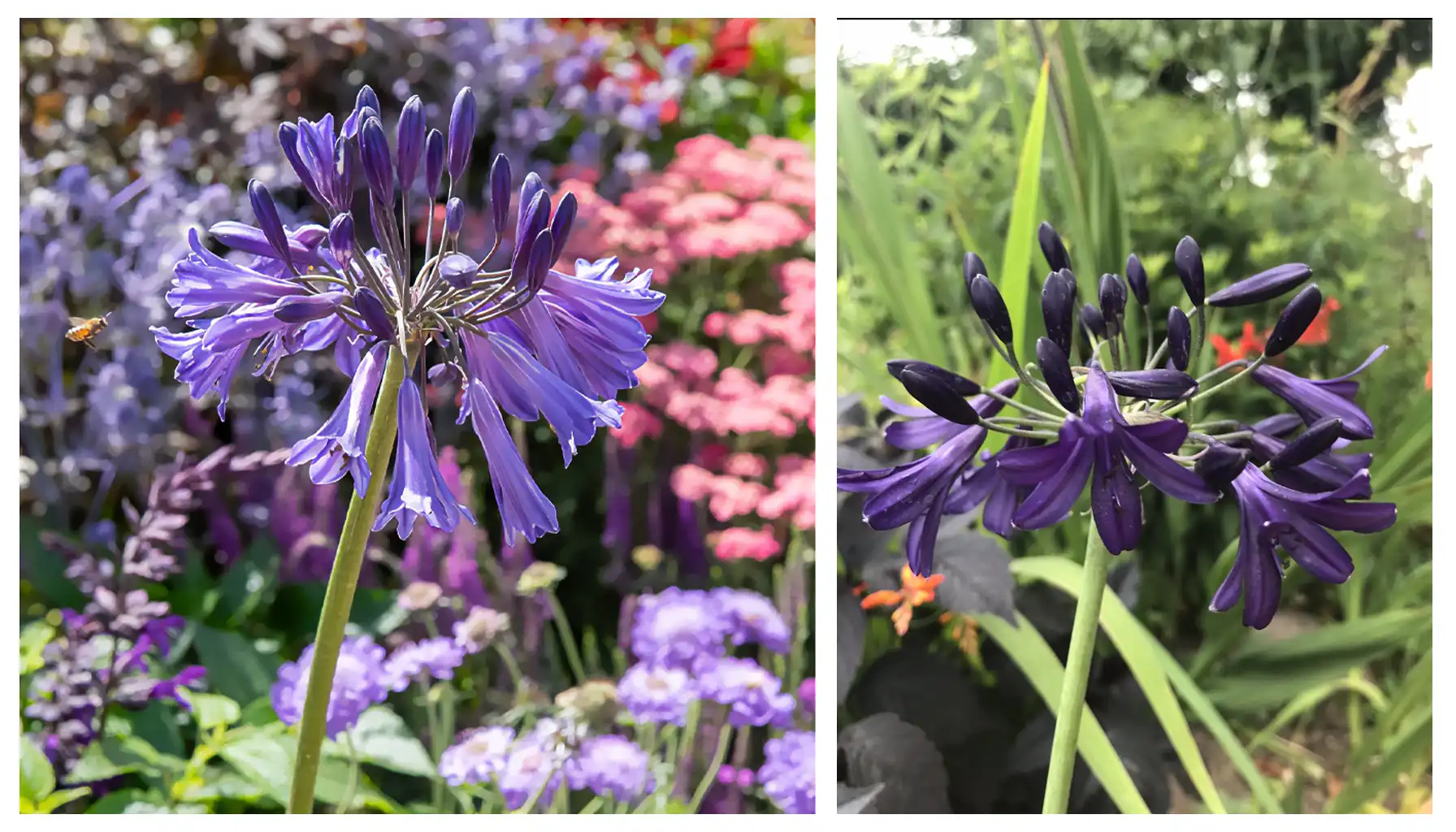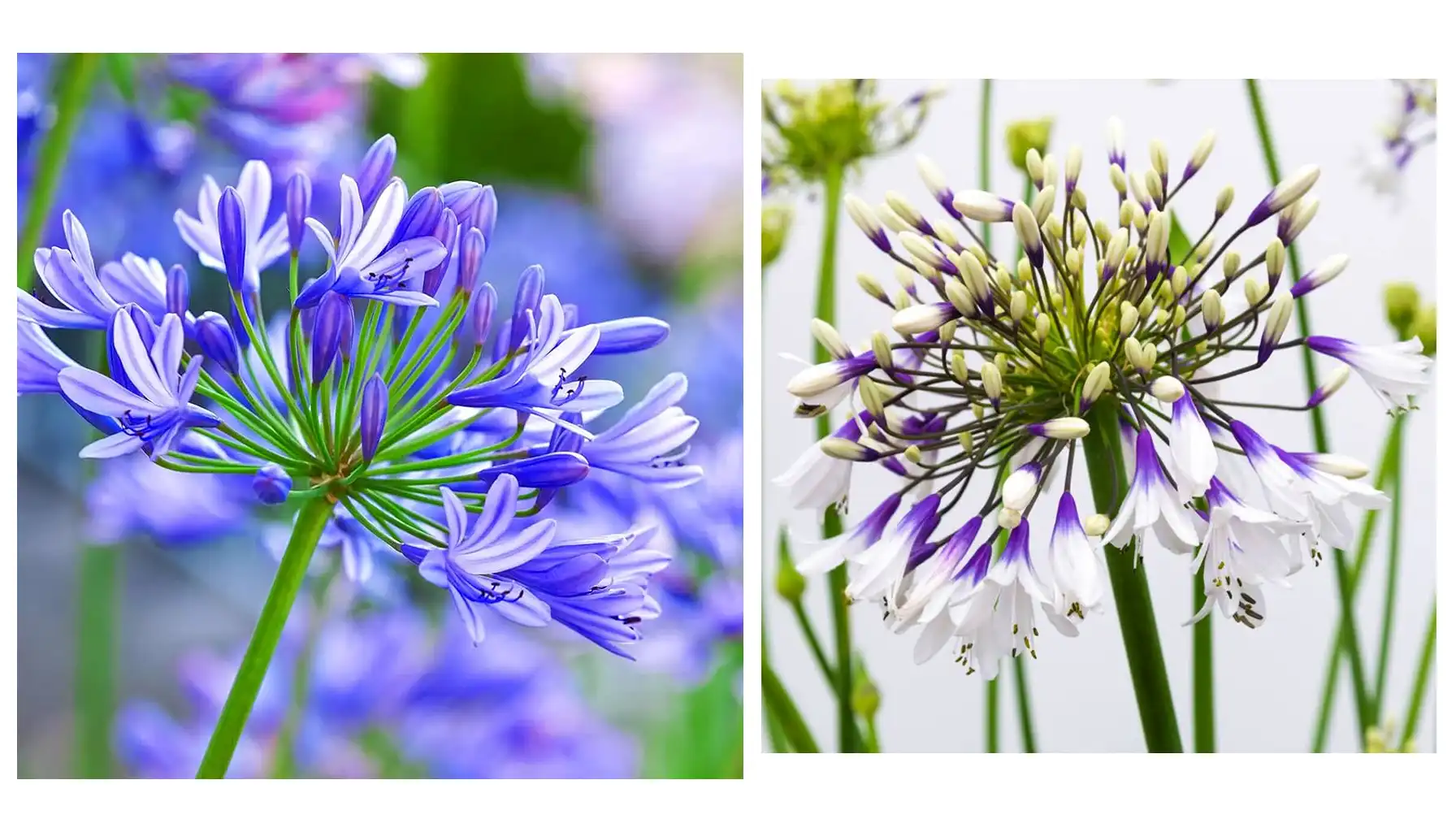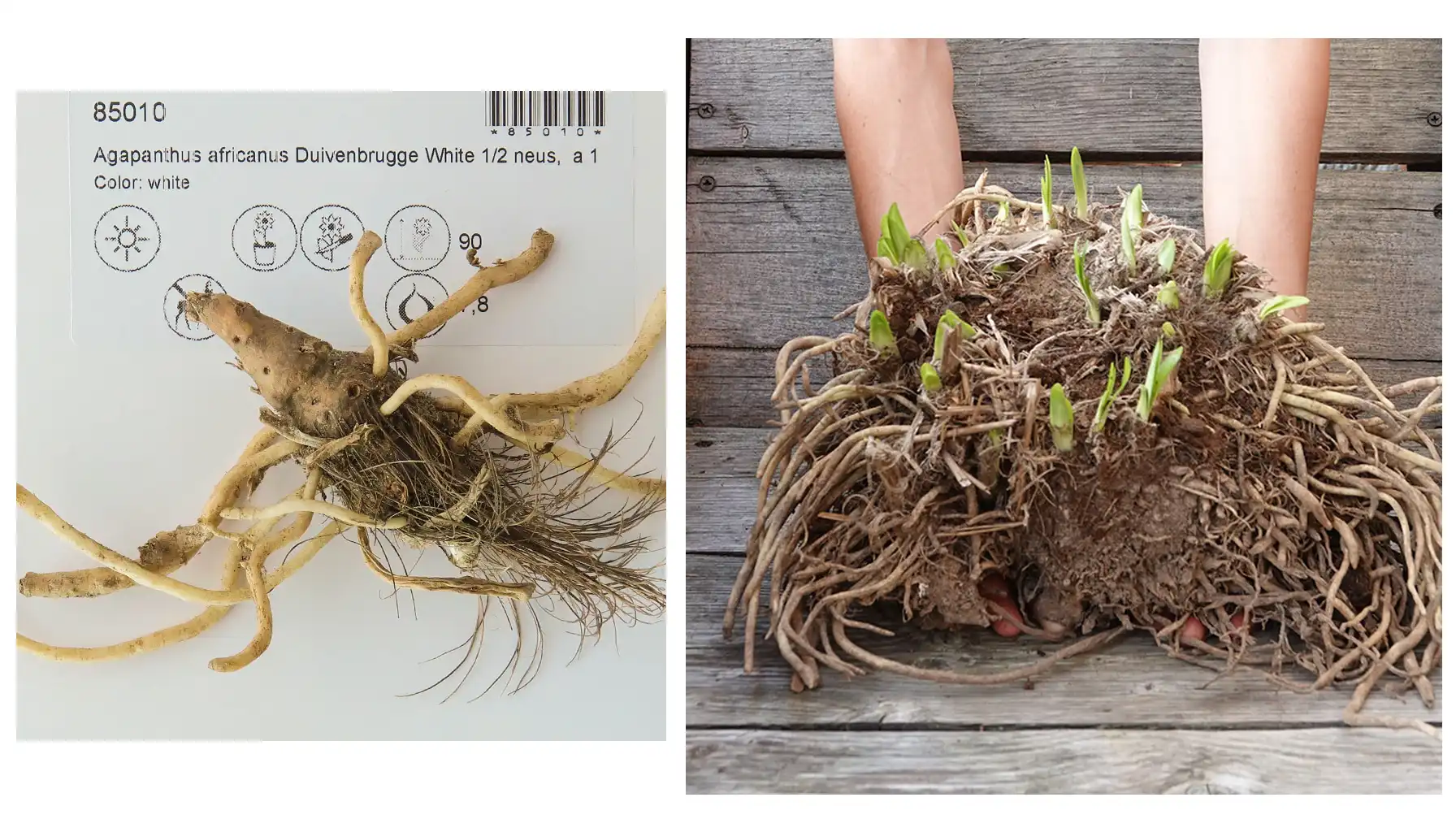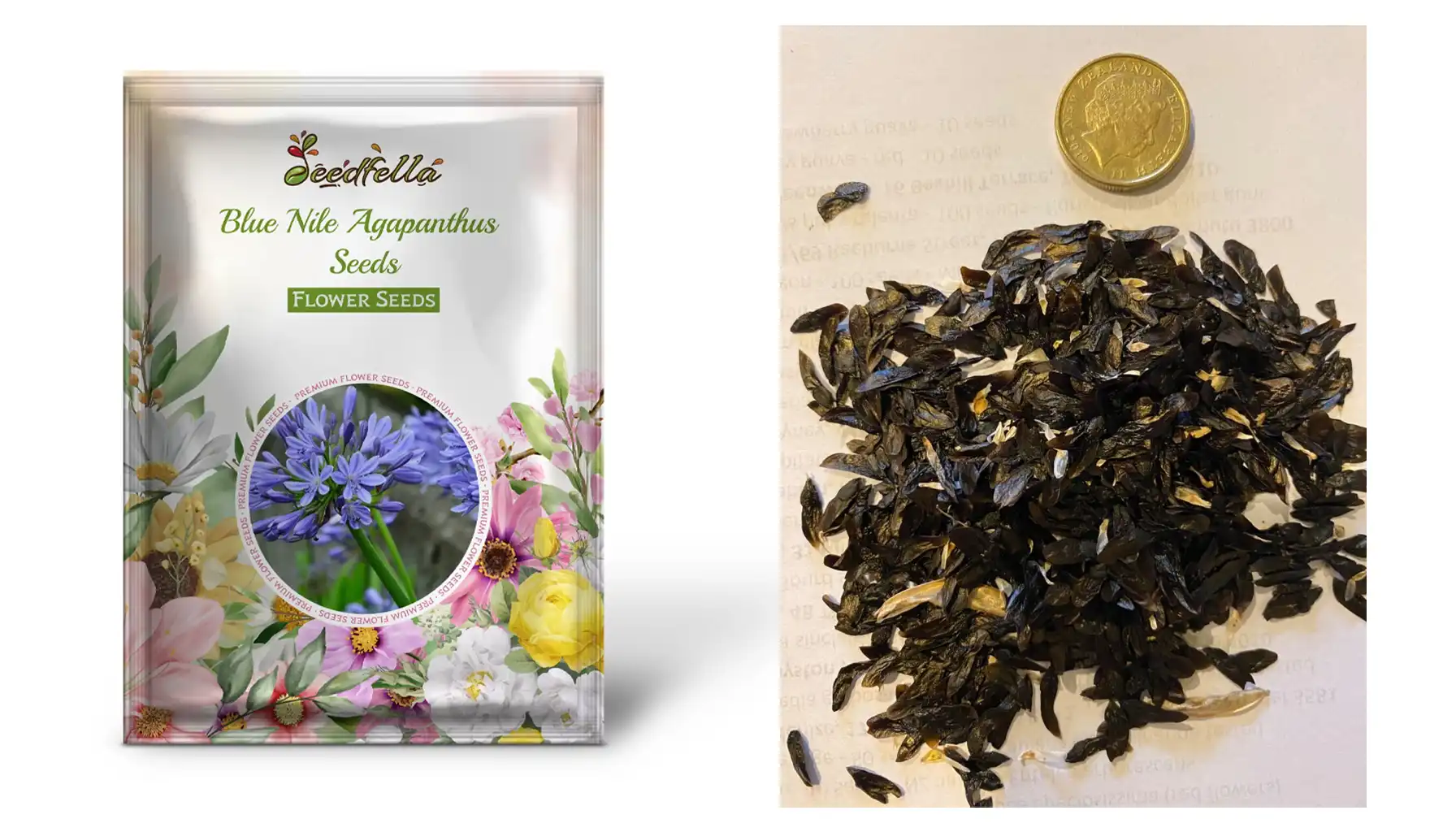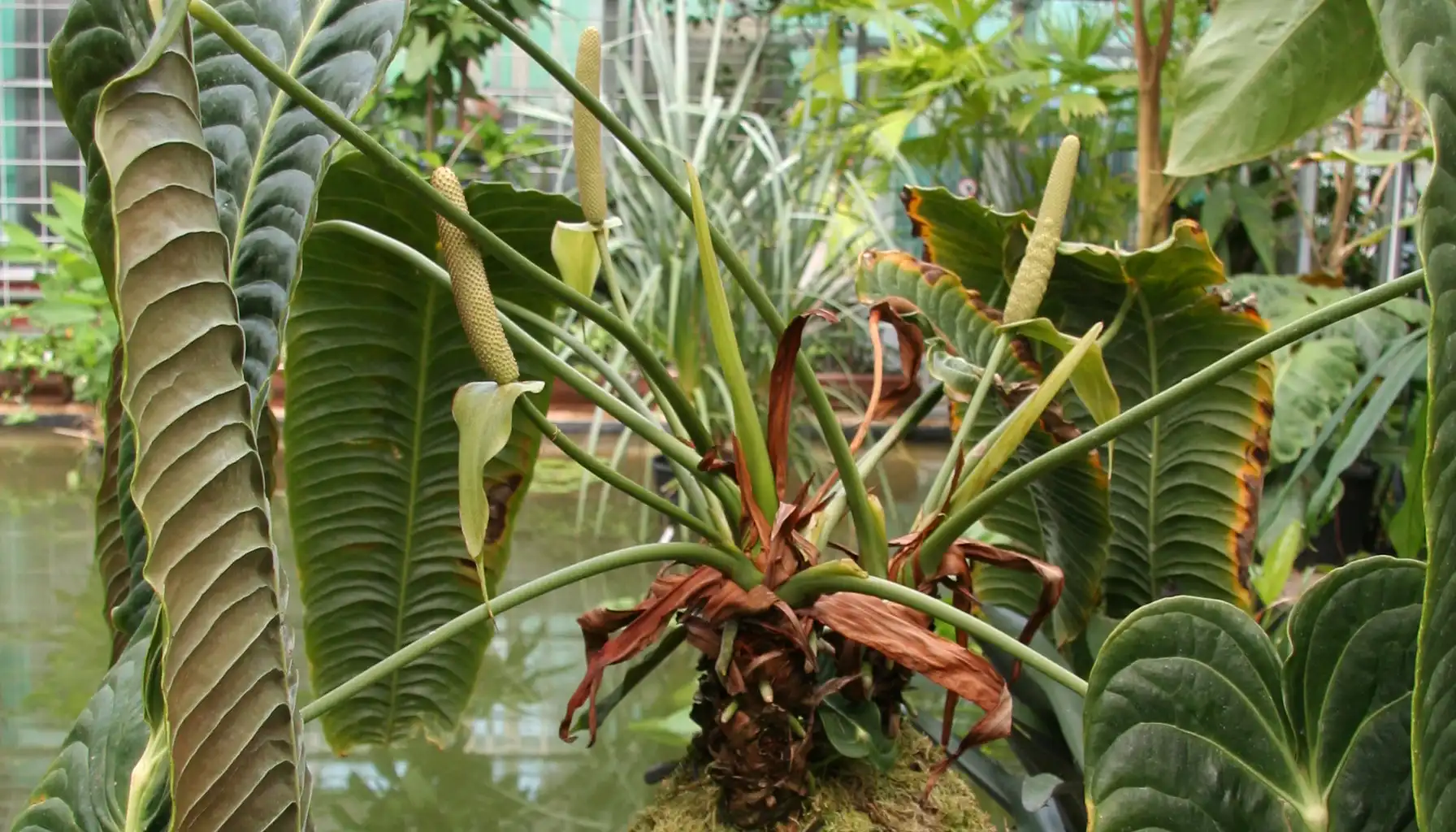It came from Africa, it’s a flower, and it’s your new green friend, Agapanthus. This decorative plant is not complicated to grow, but it has a few demands that you need to follow.
Get ready! You will learn about many varieties of this flower and ways you can use it indoors and outdoors. Pruning guide and care tips are included.
Have you ever gone outside and thought: What is this plant? Now you can get a definitive answer with the help of apps.
Agapanthus Short Overview
Agapanthus Africanus is often called the Lily of the Nile or African lily. It has striking, elegant flower stalks topped with globe-like clusters of blue, purple, or white blooms.
Despite the name, Agapanthis is not actually a lily. If you compare it with a proper member of the lily family, like a Peace lily, then you'll notice that they come from different families and have different details.
Agapanthus Lily Of The Nile Overview |
Feature | Details |
Origin | Africa (despite the “Nile” nickname) |
Type | Perennial, clump-forming plant |
Size | 1–4 ft (30–120 cm) tall |
Life span | 10+ years with proper care. |
Leaf Colors | Green (medium to dark green) |
Flowers | Funnel-shaped, blue and violet |
Propagation | Division of clumps in spring or fall + by seeds |
Toxicity | The sap is mildly toxic to humans and pets if ingested |
Special Features | Attracts pollinators, drought-resistant |
Agapanthus Varieties
If you look at the photos, you might notice a ton of Agapanthus colors. Scientists are still finding new colourful varieties in the wild or making new artificial ones.
Here are some of the most prominent varieties.
Blue Agapanthus
This variety is the most popular and has a ton of other plants representing it. Usually, this variety is used as ornamental plants. Agapanthus blue features some big names like:
Peter Pan Agapanthus: A dwarf flower reaching about 12–18 inches tall. Produces sky-blue flowers in mid-summer. Best for containers and small gardens.
Agapanthus Storm Cloud: A medium to tall evergreen hybrid. Storm Cloud Agapanthus has deep violet-blue flowers. Closer to winter, these flowers get red and almost turn the plant into a Purple Agapanthus.
Ever Sapphire Agapanthus: A compact evergreen hybrid growing. Produces rich sapphire-blue flowers with darker midribs and blooms multiple times in summer.
Agapanthus Tinkerbell: A dwarf evergreen variety reaching 12–15 inches tall. Has green leaves with creamy-yellow stripes and light blue flowers. Compared to its brothers and sisters, it’s weaker to droughts.
White Agapanthus
Compared to the blue variety, Agapanthus white is calmer, gentler. They work well as a contrast pant or as a ground cover.
Queen Mum Agapanthus: One of the most popular representatives. Has dual coloured flowers, mainly white but flushed with pale blue at the base of the petals. In some seasons, they get redder and appear almost like a pink agapanthus.
Silver Baby: Has compact white flowers brushed very lightly with pale blue. Flowers for a long time. Smaller compared to most other white subvarieties.
Snowball: Has pure white blooms placed in a round shape, hence the “Snowball” name. Has medium height.
Twister Agapanthus. Mainly white variety that gets a blue hue closer to the base. Compactly shaped.
Purple Agapanthus
Artists and masters of colour theory could argue that the purple variety doesn’t exist. Rather, it’s just deep violet blue. Still, some people recognize the “Purple” variety, and with the right lighting, the blues appear more purple, especially in the warm evening sun.
Among the especially popular purple flowers are:
Black Pantha: Features very dark violet-blue, almost black buds. Closer to the stem, they are opening to deep, bluish-purple flowers. Can take a lot of sun.
Indigo Dreams: Has compact dark indigo-purple flowers. They have a sharp look and, like Black Pantha, take advantage of the sun.
Agapanthus Care
What do these flowers need? This short guide will tell you.
Follow the right recommendations, and your Agapanthus will grow into something truly precious.
Light Requirements
This plant has the best flowering with full sun (6+ hours a day). This flower can take a lot of sun, even compared to other African flora like the Spear plant.
Still, you might choose a spot that has shade in the afternoon, especially in very hot climates. This can prevent leaf scorch, which is very detrimental to any ornamental purpose plant.
Soil and Fertilizer Requirements
Well-drained soil is essential for Agapanthus. Waterlogged roots will rot. If you keep these flora pots, use a free-draining mix with added grit or sand.
As for fertilizers, use a balanced slow-release fertilizer in spring. During flowering, switch to a high-potash feed (like tomato fertilizer) that boosts blooms.
Water Requirements
How often should you water your plants? Water your Agapanthus regularly during the growing and flowering season (spring–summer). Usually once a week.
In fall and winter, when the growing stops, you should water these plants less often.
Temperature Requirements
Agapanthus plants prefer mild to warm temperatures, typically between 60°F and 85°F (15°C–29°C) during the growing season.
Most varieties are not frost-tolerant, so it’s best to move them indoors during the cold months. Agapanthus can survive milder colds, so if you put it in a garage, it should be fine by the spring. But keep in mind that it still needs sunlight.
Proper overwintering is important for this flora, as if it freezes, it will have a worse flowering.
Flowering Tips
Flowering is the most important part for most flower plants like Agapanthus, African Daisy, etc. By following care guides, you can ensure a great flowering, but there are extra tips.
Follow the care requirements (as told).
Don’t overpot. This plant blooms when it feels like it has grown “enough”. If it has extra space in the pot, it will grow more leaves and roots, not flowers.
Avoid nitrogen fertilizers. Nitrogen is a great fertilizer, but it promotes foliage growth, and leaves may overtake the flowers.
If your Agapanthus flower looks wilted/ dead, remove the dead parts via pruning to let new ones grow.
Pruning Tips
Usually, we associate pruning with harder plants, like bushes and trees. Surprisingly, a large number of flowers, like Kaleidoscope Abelia and Agapanthus, need pruning too. But for what?
After blooming ends, usually late summer to early fall, you end up with wilted-looking ends. To make new flowers, you’ll need to clean up any old or damaged foliage.
Prepare your tools. You’ll need sharp garden shears or scissors, plus gloves. This flora contains sap that may irritate your skin, so protect yourself.
Find the spent flower stalk. They may look wilted, have yellowed/browned damaged leaves.
Cut the spent flower stalks down to the base near the soil. This prevents the plant from wasting energy on seed production and encourages more blooms next season.
Be watchful! After pruning, the plant is more vulnerable to pests and diseases.
Propagation Guide
Agapanthus has two main propagation methods: by rhizome (roots) division, and by seeds. Root division is a more reliable propagation method.
Rhizome Propagation
Rhizomes are root structures. If you take them away from your plant and make them grow on another spot, they will end up making a new flower. Among African lilies, their rhizomes resemble bulbs. They are not Agapanthus bulbs, but look similar.
Carefully dig up the whole clump of agapanthus. Shake off or wash away soil to see the root structure.
Using a sharp, clean knife or garden spade, cut the root ball into sections. Each section should have 3–4 healthy shoots and roots.
Trim any dead or damaged roots (otherwise they may spread rot).
Replant divisions at the same depth they were growing before, just to another spot (to evade competition with the adult flower).
Water this offshoot consistently and keep it moist until established. When it grows, it acquires drought-resistant properties and needs less care.
Seed Propagation
Seeds are less reliable because you can sow seeds mainly in spring. Still, if you want to try seed propagation, follow these steps:
Collect seeds from dried seed pods after flowering. The seeds are black. Depending on the variety, they can be long and oval-shaped or rounded.
Sow seeds in seed trays or pots filled with a well-draining seed compost mix.
Lightly cover seeds with a thin layer of compost or sand. Keep soil moist and maintain a temperature around 70°F (21°C). Germination usually takes 2–4 weeks.
When the seedlings grow, transplant them to bigger individual pots. Seed-grown plants may take 3–4 years to flower and might not resemble the parent plant if it’s a hybrid.
Agapanthus Benefits for Owners
Agapanthus is wonderfully helpful because it can synergize with other plants in the garden and help them. Landscaping with Agapanthus gives the garden a great look and healthy soil.
Benefit Category | Description |
Ornamental Value | The flowers are attractive and long-lasting. Ideal for gardens, borders, and landscaping. Can synergy with other flowers like Hydrangeas. |
Low Maintenance | Hardy and drought-tolerant, therefore requiring minimal care, time, and energy from you. |
Erosion Control | A dense root system helps stabilize soil on slopes and prevent erosion. |
Pollinator Friendly | Flowers attract bees, butterflies, and other pollinators, supporting local biodiversity. |
Air Quality | Like many plants, it contributes to air purification by producing oxygen and filtering pollutants. |
AI Plant Finder
The AI Plant Finder app is a free tool for plant and disease identification. It's available for both iOS and Android devices.
The most notable features of this app are:
Instant Plant Identification: Snap a photo of a plant, and the app quickly analyzes it to provide the species name, family, and common names.
Care Recommendations: Receive detailed care instructions, including optimal temperature, sunlight, humidity, soil type, and pH levels.
Disease and Pest Detection: Identify signs of diseases and pests, with suggestions for treatment and prevention.
Smart Reminders: Set up personalized watering, fertilizing, and maintenance reminders to keep your plants healthy.
Plant Collection Management: Organize and track your plant collection within the app.
Download the AI Plant Finder, and every venture outside turns into a learning opportunity.
Related AI Plant Finder Posts
